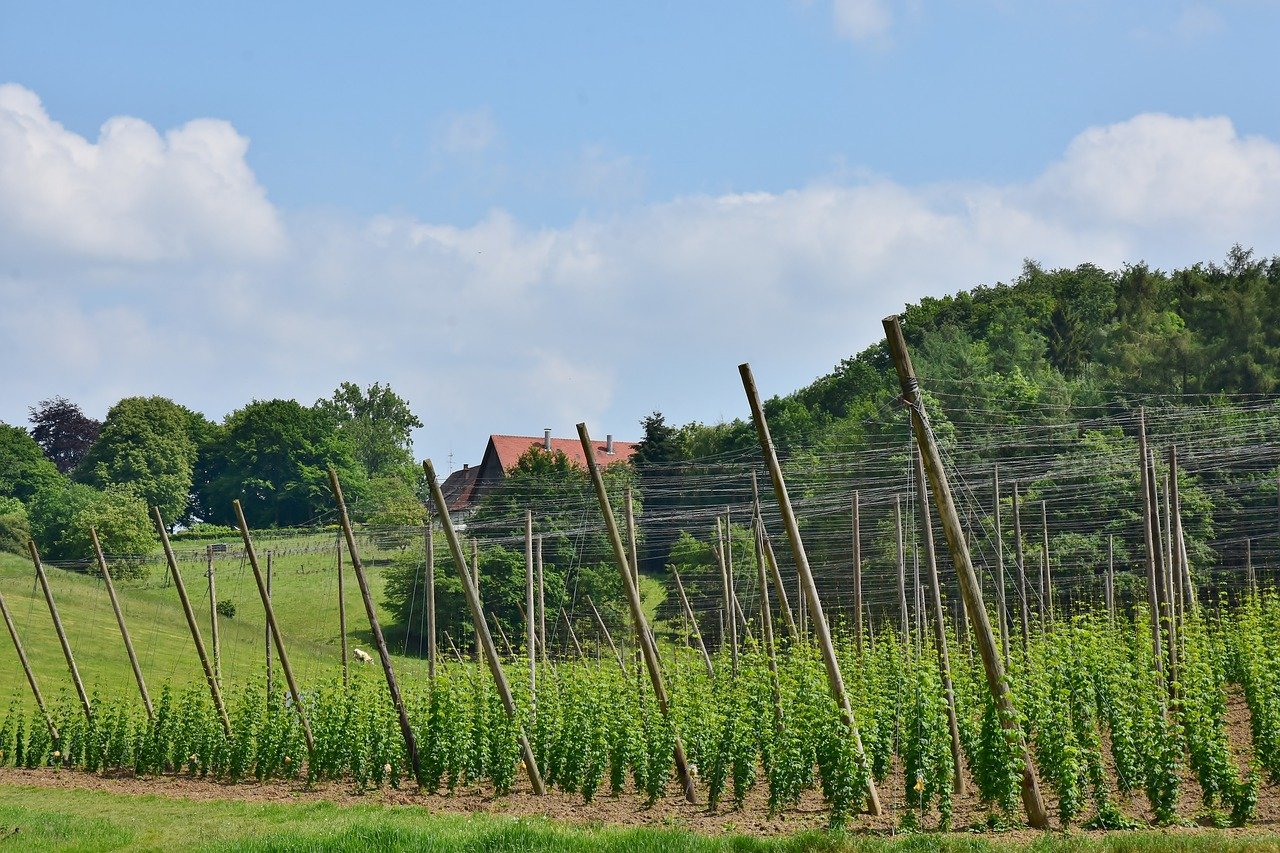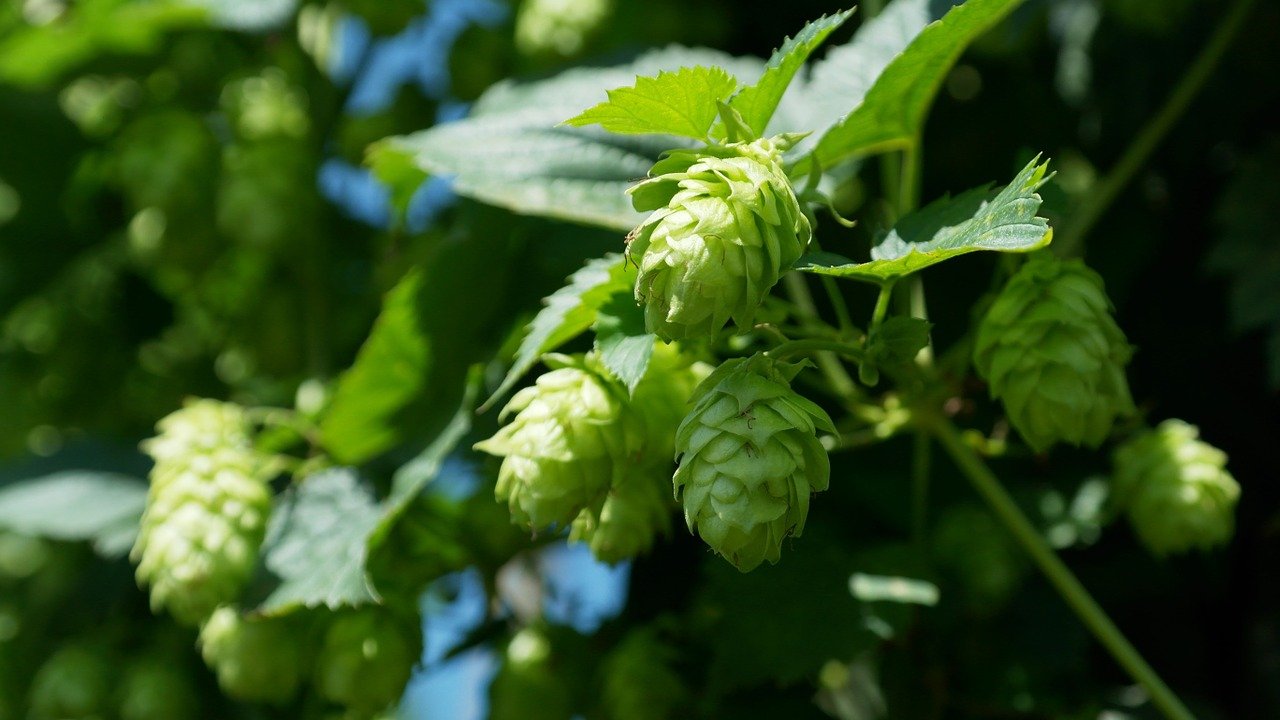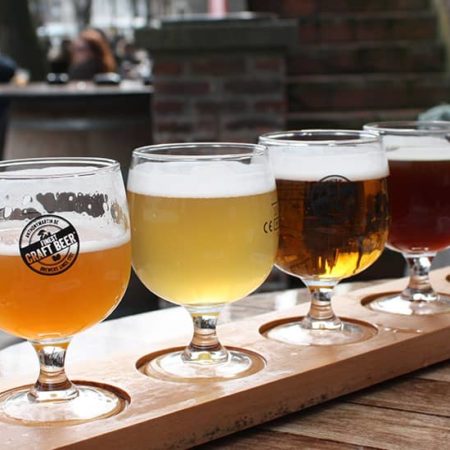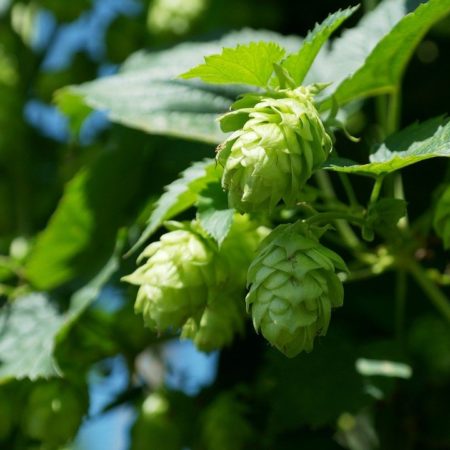What’s hops ?
« Flowering plant » male or female – dioecious – typical of the northern hemisphere, climbing Humulus Lupulus is a nettle cousin, urticales family and brother of hemp, Canabaceae family. Perennial and herbaceous, it’s cultivated mainly for its cônes rich in organic compounds, necessary and highly sought after in the brewery ! These cones or inflorescences present on female plants, produce a yellowish dust. Lupulin which secretes bitter resins and essential oils that actively participate to the bitterness and aromatic of beer bouquet.
The brewer green gold
Revolution symbol as well as north american craft movement engaged since the eighties, hops have now established themselves as a “flagship” ingredient in the beer composition. Of english, german or american origin or from a crossing or a breeding program research, many varieties exist (230 more or less) and offer possibilities of endless combinations ! Bittering, aromatic and bacteriostatic, hops can be integrated into the manufacturing in different ways :
- In the action (hot) : mash hopping (addition to material tank), first wort hopping (addition in the boiling tank from the start of the must filtration phase), bitter hop addition (addition in the boiling tank from the the boiling start), aroma hop addition or mid and late hop addition (addition in the boiling tank 30 minutes before the boiling end), and steep or hop stand or flame out or via hop black hop addition (addition during cooling).
- After the action (cold) : dry hopping (addition during or before fermentation or aging).

Become a hop producer ? Why not !
Alsace and Flanders alone account for the majority of french hop culture. In a temperate climate, hops also need a deep soil to flourish properly. Flat and draining of the silty-sandy or clayey type and more than 15 hours of light per day,. And beware of the water requirement which can be quite significant : from 250 to 300 millimeters between June end and early August. The variety choice is also thinkable and it is influenced by soils quality and the annual climate. Plants can be obtained from a rhizome cutting (perennial and underground stem) and the crop should be planted ideally around mid-April. When spring comes, begins the vegetative season : it’s the threading, the moment to wind, from the rhizome, the first lianas along a coconut thread that can eventually clim to more than 6 meters high. The harvest most commonly occurs at the end of summer for early hops and until the end of September for late hops. We tear off the lianas from the scaffolding to immediatly grab the cones and dry them by blowing hot hair. These will be then compressed and packaged in 50kg bales to finally by kept cool and dry until shipment.



